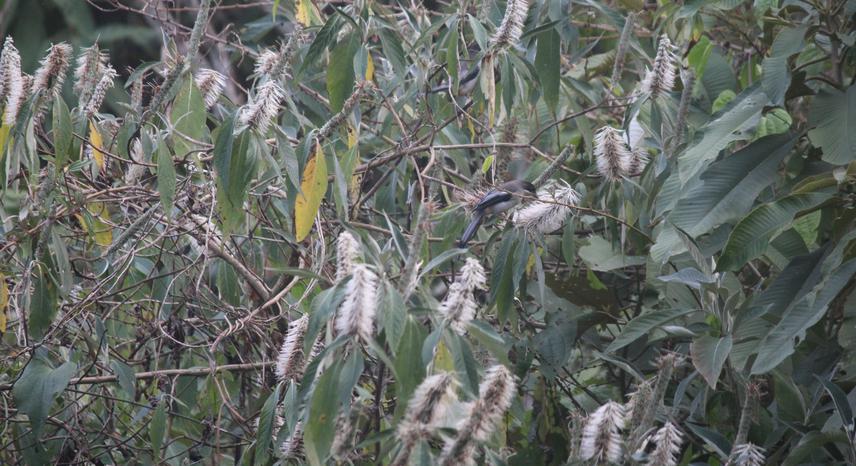Thangsuanlian Naulak
The objective of the project is to assess the present status of IBA trigger species found at KWLS, identify their present distribution sites and document their habitat use, meanwhile creating conservation awareness among the people.
Kailam Wildlife Sanctuary (KWLS) harbours three Important Bird and Biodiversity Area (IBA) trigger species i.e. Rufous necked hornbill (Aceros nipalensis), Mrs. Hume Pheasant (Syrmaticus humaie) and Grey Sibia (Heterophasia gracilis). They feature in the IUCN red list as Vulnerable, Near Threatened and Least Concern respectively. Due to the remoteness, inaccessibility and political turmoil prevailing in the region no significant research has been carried out. As such, conservation and awareness campaigns are almost nil. The study will identify their distribution, status and habitat use of these bird species.

Grey Sibia feeding on Colebrookia oppositifolia.
These birds are subjected to heavy anthropogenic pressure like habitat loss due to logging, fire wood collection, and shifting cultivation and poaching for food and local trade. Habitat loss is a wide-ranging problem with extensive underlying political and economic influences. This study will bring information on status of the habitat of the bird so that appropriate measures can be taken for the conservation of these species. Conservation awareness is given a major thrust in this project to enable participation of the local communities in conservation activities.
Due to the difference in habit of these bird species, their ecological niche covers a wide range of ecological systems. Therefore, if adequate protection measures are taken for these flagship species it will benefit a huge range of flora and fauna found in the area. Thus, the information gathered through this project can be utilised for more specific protection measures including prioritization of habitat areas and sensitization of local communities of the need for conservation. The project will generate a baseline data so as to identify key areas in the regional landscape for conservation and management of these flagship species and their habitats.
This project will hopefully generate and promote better understanding, among the local communities, of the diverse ecological interactions between different species of plants and animals and the need to protect and conserve biodiversity as a whole.